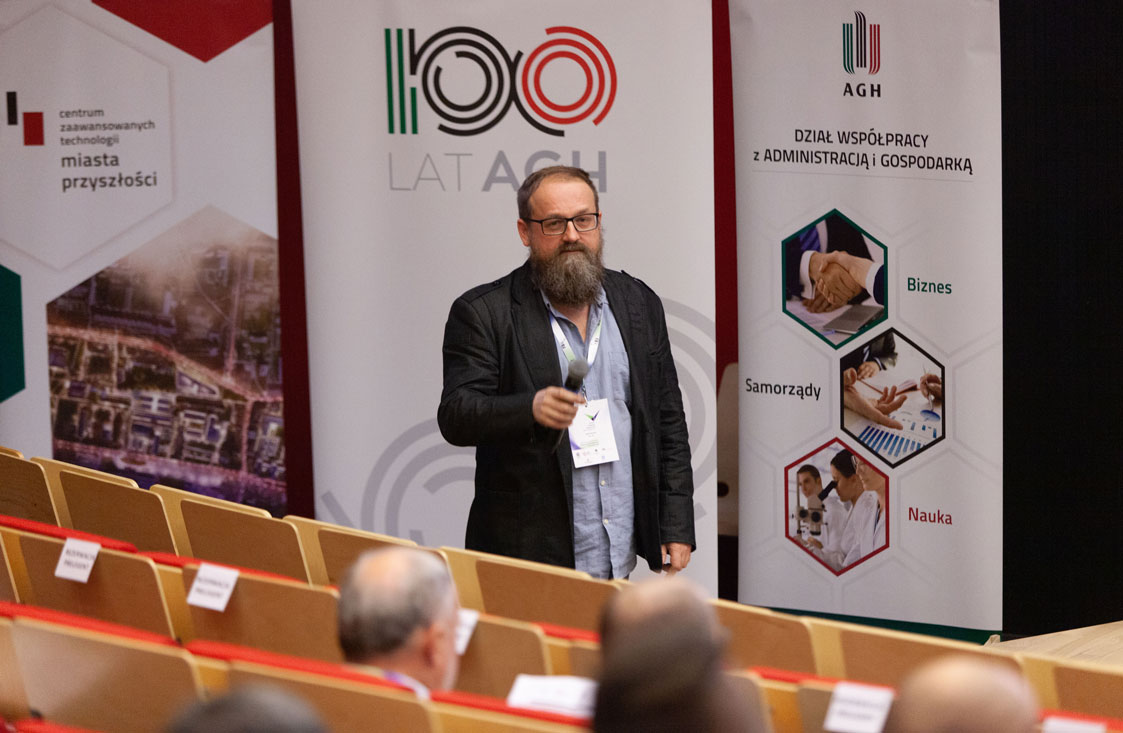Five years ago In Poland, community energy was mentioned by a few mainly international organizations that knew examples from Europe. The idea was not present in the main public discourse. The first “Our Energy“ („Nasza Energia”) cooperative was not able to convince people to join.
When in 2016 we promoted a crowdfunding campaign in Poland, we knocked on different doors and talked to different people. Although it didn’t bring any measurable results at that time, the idea of cooperativeism started to budge. In the course of production, which we decided to carry out on our own, and still lobbying in different places, we saw how the law is slowly beginning to change in Poland, and it is beginning to talk more and more about cooperatives and community energy.
And now Adam Dzienis, the film’s producer and director, is invited to one of the biggest Congresses of dispersed energy, where meeting leading politicians together with experts and local activists.
Recording of the Conference can be viewed in Polish on Youtube. https://www.youtube.com/watch?v=SKcDYSL5EnI
To quote Adam Dzienis, producer and director of the film Human Energy.
He mentioned how difficult it was to gain trust among the cooperatives at the beginning, because in 12 countries this story was repeated – they said they were treated badly by the media. There was no promotion of this phenomenon.
„It is very difficult to show energy – to explain it.“
Adam gave the example of Denmark, which he visited with a camera – travestying Shakespeare – and that’s where things are going pretty well. The 100% independent island of Samso, as an example of combining social, individual and municipal capital. where not many mention that the idea came from the Government. Or the example of the Middelgrunden energy cooperative, shown in the film Human Energy, where half of the 20 windmills are owned by Copenhageners. “It was very difficult to gain the trust of the Danes, I had to re-edit the film many times because they didn’t want an intruder who would distort the message”.
„It seems to me that we have a problem with accepting this message from the film as a possible one. We have a problem with accepting the so-called ” general consent” so that we all know that it is possible: where, how, that it is possible already.”
Adam also thanked the Minister of Climate for using the words human energy in his speech. We often underestimate this, about 50% of energy in 2050 may come from ordinary people. This is what the report on the independent group of experts from CE Delft calculated [1].
(Research institute calculated the potential of energy citizens in Europe to produce renewable electricity and demand response).
„But in order to achieve this, it is necessary to promote it a little, to encourage people so that public acceptance increases.“
He also quoted one story. A woman from South Africa was present at the Polish premiere of the film at COP24. During the discussion after the screening she said: – Thanks to these practical solutions that you included in the film, I think that this panel was the most interesting.
It may be the best recommendation to watch the film.
Climate Minister Michał Kurtyka, who is present at the Forum, said that Solar installations in Poland could reach a total capacity of 1,500 MW at the end of 2019.
According to him, technological progress and reducing the cost of installations, mainly photovoltaic, favors the dynamic development of distributed energy in our country.
“A year ago, in December there was 200 MW of installed capacity when it comes to photovoltaic panels in Poland, and at the end of this year we can probably even reach 1500 MW, and in any case, in October we exceeded 1000 MW and this is a rapidly growing trend at this point” – Kurtyka pointed out during the conference on distributed energy at the AGH University of Science and Technology in Krakow.
The development of distributed energy is also supported by energy clusters and energy cooperatives. As Kurtyka reminded, currently out of several hundred such clusters 66 has the status of a pilot cluster, awarded by the Ministry of Energy.
“We currently have 66 such cluster structures – all this is accumulated human energy. We are interested in arranging our energy in a different way. This is a powerful asset that is at your fingertips today “- said the Minister of Climate.
He also noted the falling prices and growing availability of other forms of distributed energy related to e.g. heat pumps or passive construction.
Thanks to the amendments to the RES Act, the prosumer may be a household, but also a company that produces – e.g. through a photovoltaic installation – electricity for its own needs and sells surplus electricity to the power grid. Support for launching installations enabling this installation is provided by the government program “My Electricity” (Mój Prąd), which provides for a total expenditure of PLN PLN 1 billion for at least PLN 200,000. such installations. Co-financing may reach half of the costs incurred, maximum PLN 5,000.
According to Kurtyka, the development of distributed energy in Poland will improve the quality of life of citizens and improve the country’s energy security. It also increases the innovativeness of the economy, creates new jobs and development opportunities for Polish companies [2].
_
[1] CE Delft, 2016. The Potential for Energy Citizens in the European Union. https://www.ce.nl/publicatie/the_potential_of_energy_citizens_in_the_european_union/1845
[2] PAP, Poland, https://krakow.tvp.pl/45497552/ii-forum-energetyki-rozproszonej-w-krakowie)



